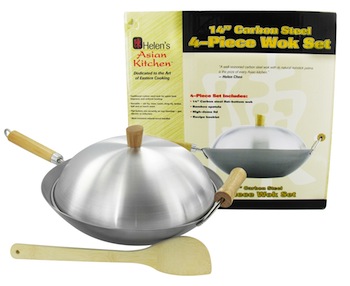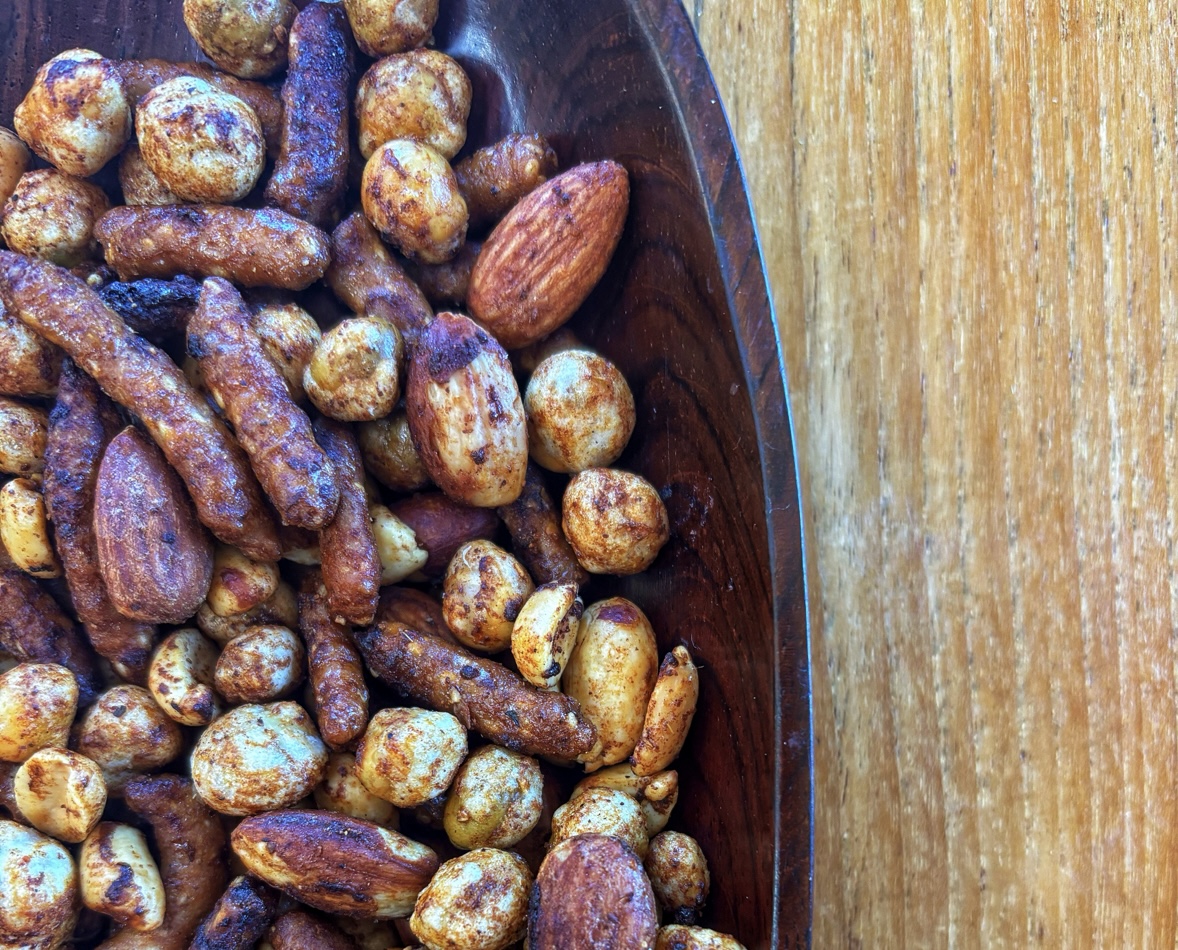We spoke with Helen a few years ago about her recently released cookbook, and thoughts on Asian cooking in the U.S., as well as her favorite tools. We thought we would connect with her again to discuss two of the most popular Asian tools in the kitchen – the wok and the bamboo steamer – to see if it might be time for us to replace or upgrade. In this post we discuss the wok – next up, the bamboo steamer.
How can I tell if it is time to replace my wok?
- Most professional cooks use the round bottom wok, which is the traditional wok shape. It works well on large stoves, but for most American homes, this shape of a wok is too big for the range top, causing it not to heat properly. This is true even if you use a wok ring, which is used to support the wok when used on a regular range, helping direct heat to the bottom of the wok and provide stability. It is also interesting to not that the last time I visited China and stayed with cousins, no one had a round-bottomed wok.
- If the handle is loose or burned, it is time to replace. Sometimes the rivets loosen up with all the heating and cooling of the pan. If the hand is loose, worn or charred, it is time to preplace.
- If the pan is dented – who knows what might have happened.
- You’re tired of seasoning it – or it is rusty every time you pull it out to use. I have to say that if you have a beautifully seasoned wok, one that you use frequently and are comfortable using, keep it. But, a good quality wok pan must be kept seasoned. And, if you don’t use if frequently, it will tend to rust, and you will have to season it every time you use it. In general most home cooks don’t have time to season. If your carbon steel wok always looks rusted when you pull it out to use, I would suggest that it is time to replace it with a nonstick-coated wok. The traditional carbon steel work requires seasoning. It takes a good 8 or 9 months of regular use for proper seasoning to occur. Because the pan is not used enough, it never really quite get to the stage where beautifully seasoned. And when it is seasoned and it is hanging on the pot rack or stored in a cupboard, the extra oil can collect dust, or the oil can become rancid.
What should I look for in a new wok?
- As I mentioned before, choose a flat-bottomed wok.
- Choose a quality wok, one with from a trusted brand name. Yes, you may pay a little more for it, but it will last for years to come.
- Choose a wok that is nonstick coated because there is no need to season it. Choose a wok that has a well-known and trusted brand of nonstick coating, Remember, there are different kinds of nonstick developed for cookware and bakware, because the pans perform differently. The Excalibur® nonstick used on Helen’s Asian Kitchen products, is reinforced with stainless steel, and is designed for cookware. Its strength and long lasting durability is so important for the high-heat demands of stir fry cooking.
How should I care for my new wok?
- Assuming you have a nonstick-coated wok, I would say one of the most important ways to care for your new wok is to never use high heat. High heat is not good for cooking because anything that is burned is carcinogenic, even the oil that you heat until it smokes. My advice is to pay attention to cooking. The moment the oil begins to smoke it begins to degrade. In fact, the way most people think about stir-frying is wrong. Many believe it has to be red hot before you can cook on it, but that isn’t true.
- Never heat a nonstick pan if there is nothing in it. The problem is that if nonstick cookware is heated without anything in it, the nonstick begins to weaken. If you heat the pan with oil in it, once it begins to sizzle, you know it is ready. But if you have nothing in the pan, it is harder to know when it is ready to cook in.
- Don’t boil water in a wok, whether it is nonstick or not. Woks are not made for this. If it is a carbon steel wok that is well seasoned, boiling water in it strips away the seasoning. Further, nonstick stir fry pans and sauté pans are made to cook with oil, so constantly cooking boiling water weakens the nonstick. You’ll know if this has occurred when the nonstick begins to look dull and dry.
- Finally, don’t put it in the dishwasher. The high heat of the dishwasher and strong detergents will strip seasoning, and dry out the nonstick.
For a collection of Asian kitchen tools, cookbooks, recipes and more, visit her site Helen’s Asian Kitchen, or HIC Kitchen.





